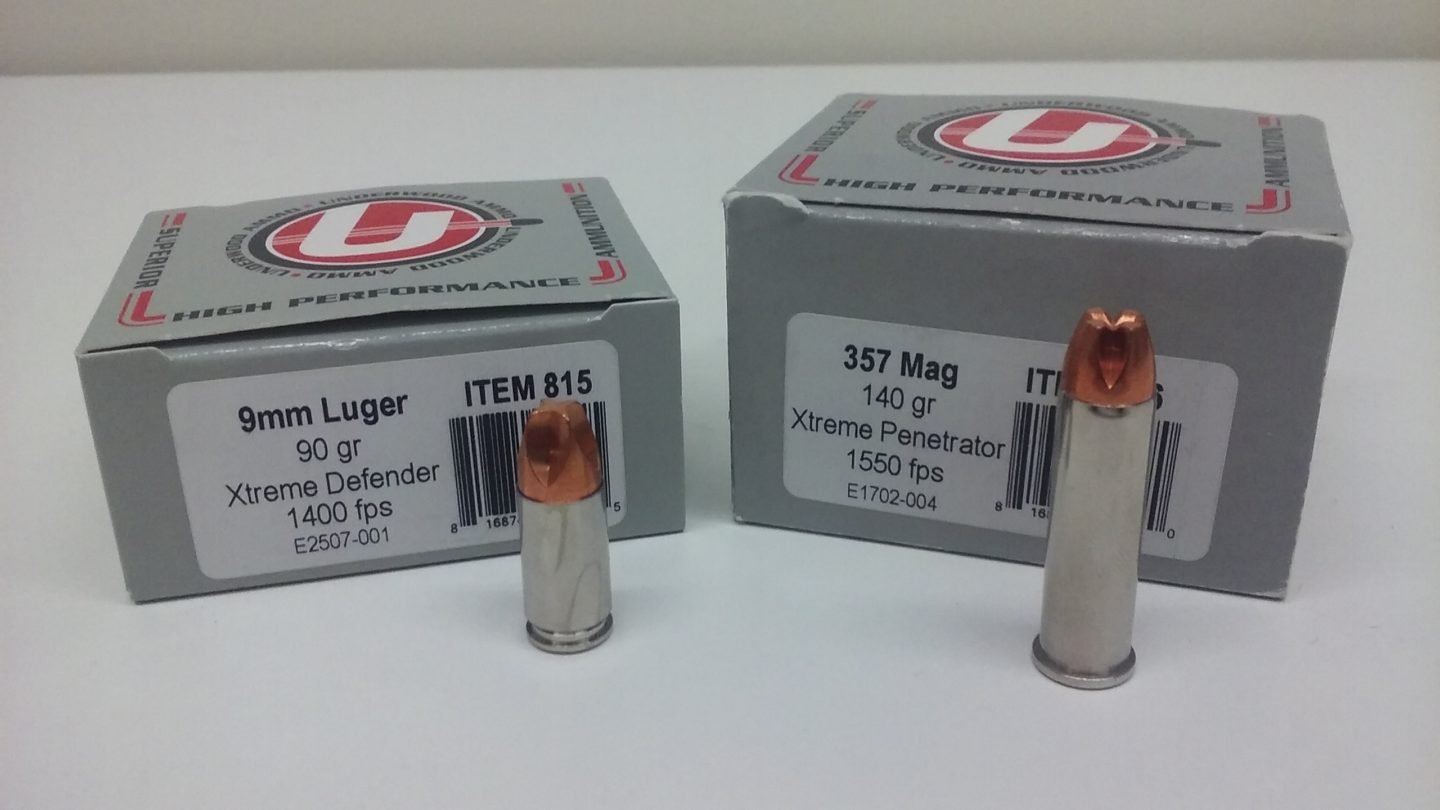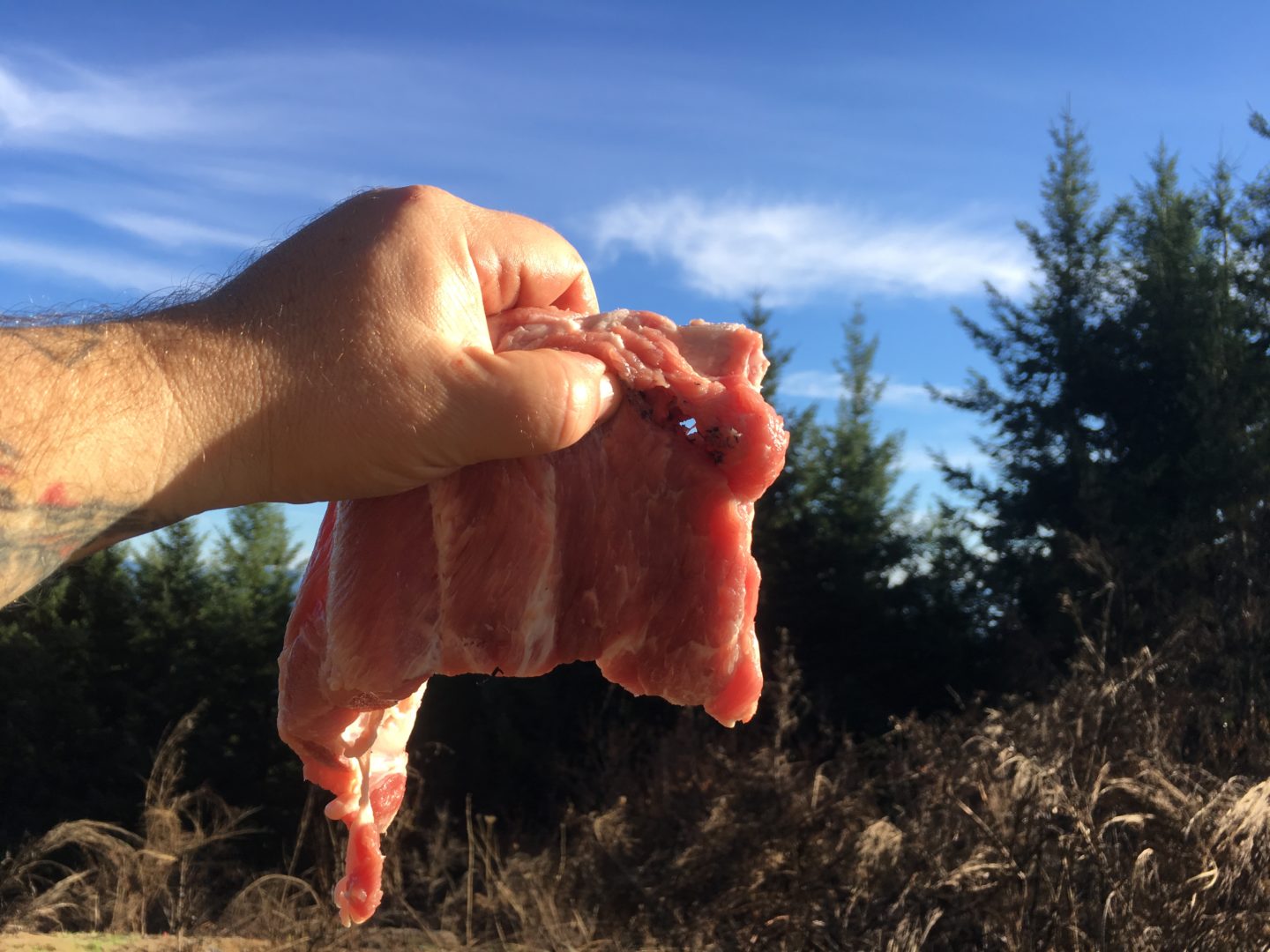Although the subject of this article is without doubt a test, it is not highly scientific by any means of measure. And (you might be shocked), I am not a scientist. Ammunition tests undertaken with ballistic chronographs, FBI-grade ballistic gelatin, bench mounts, and very expensive 1 million frames per second slo-mo cameras are readily available and they’re awesome. I watch them all the time but they seldom address a reality-based target.
I wanted to see how high-quality defensive ammo performs in a gun I carry against what in all reality would be a human dressed in what normal humans would be wearing. I created an environment to have the target receiving fire through the best I could simulate as heavy clothing on an upper torso. What I came up with was a side of pork ribs, which my paramedic friend assured me is quite similar to human flesh and bone structure, stuffed inside in a hoodie wrapped in denim. Behind this I placed 1 gallon plastic jugs of water.
To test the ammo that Underwood sent me, I used two of my actual carry guns: a Smith & Wesson model 60 .357 and my CZ 75D compact. I tested both, shooting from 3 to 5 yards.

The ammo I chose is the Underwood Xtreme Penetrator in.357 Magnum 140 gr. at an advertised 1550 feet per second for the model 60. I used the Xtreme Defender in 9mm 90 gr. 1400 feet per second for the CZ.
Both of these are very hot rounds at that speed with the new design CMC milled all copper bullets. The Penetrator is designed to do just that–penetrate without fail. At 1.78 inches of a very short barrel on the J-frame, it needs that help to make the bullet go faster.. The Defender is designed for maximum expansion and wound channel, which I like for the lighter, smaller round.

Underwood ammo is underrated in my opinion. I learned about it from my favorite YouTube gun channel, The Military Arms Channel. Tim’s reviews are always un-biased and super thorough.
So after my set up, I was finally ready to shoot on what turned out to be a warm and sunny October day. I have planned to go shooting outdoors again next weekend, but this is probably the last time for the year until the weather gets nice again next spring for outdoor shooting.
As you can see, both rounds terminated the milk jugs command with EXTREME prejudice. I had little doubt they would get through. But what I did not expect was how easily they passed through the rib bones. I intentionally aimed for a section where I knew there were bones. I expected it to shatter and pull some of both fabrics with it on the way through. Wrong. Both rounds passed through the bone effortlessly, leaving a perfect round hole through all barriers.

After we saw the results of that shot, we estimated it would take about 15 jugs of water and possibly a car door to slow down the .357 Penetrator. The 9mm Defender performed every bit as well. The difference can be seen in the video snippet above. Notice the second or middle jug literally blowing up from the pressure as the channels in the Defender bullet distribute the energy outward. Excellent design.
Like I said earlier, none of this is hard science! But if I’m going to count on something to save my life and possibly others, I need to know first-hand how it behaves and what that experience is like. These attributes of bullet performance and delivery of the payload are never for extra destruction or cruelty. Quite the opposite actually. The faster I can stop a threat with the LEAST shots fired the more likely myself and everyone involved gets to continue our lives to the best of our ability, including my assailant. I am confident Underwood Xtreme Penetrator and Xtreme Defender delivers the goods promised. I will have no problem using these as my EDC choice.

